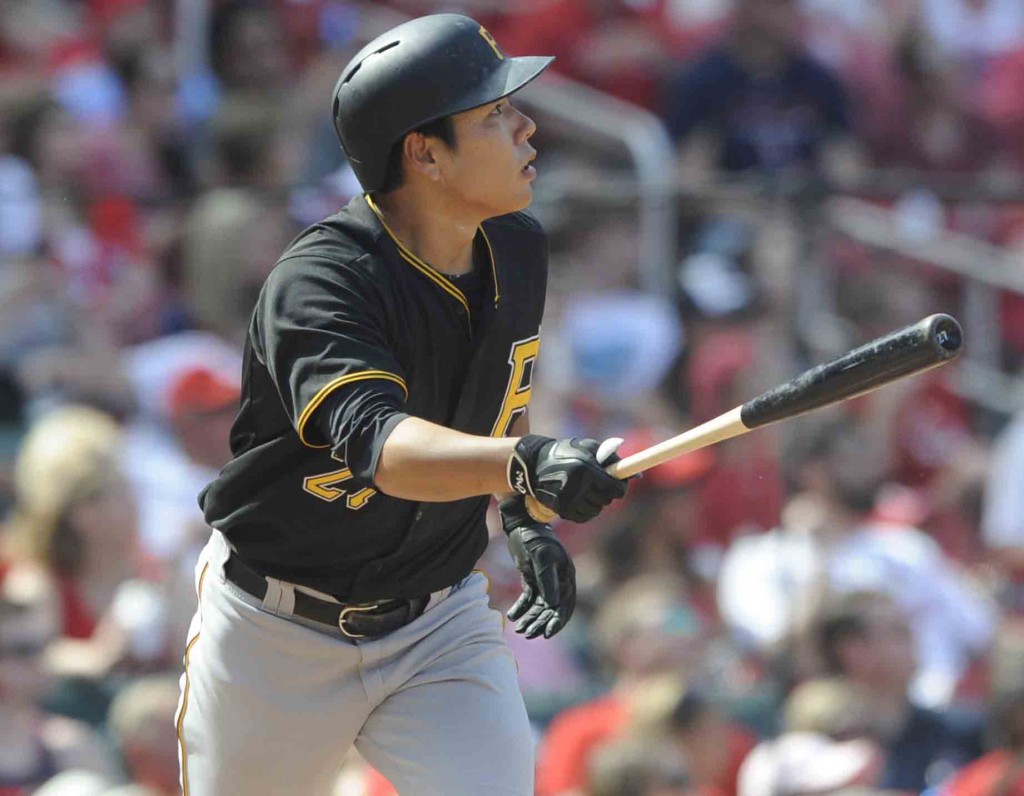- California Assembly OKs highest minimum wage in nation
- S. Korea unveils first graphic cigarette warnings
- US joins with South Korea, Japan in bid to deter North Korea
- LPGA golfer Chun In-gee finally back in action
- S. Korea won’t be top seed in final World Cup qualification round
- US men’s soccer misses 2nd straight Olympics
- US back on track in qualifying with 4-0 win over Guatemala
- High-intensity workout injuries spawn cottage industry
- CDC expands range of Zika mosquitoes into parts of Northeast
- Who knew? ‘The Walking Dead’ is helping families connect
[Grantland] He’s the Captain Now: Kang Jung-ho
Pittsburgh Pirates’ Kang Jung-ho, of South Korea, watches his solo home run against the St. Louis Cardinals in the ninth inning in a baseball game, Sunday, May 3, 2015, at Busch Stadium in St. Louis. (AP Photo/Bill Boyce)
Baseball has an interesting relationship with the unknown. An unknown teenager is a shining beacon of hope, a collection of tools and skills that can be honed as he develops physically and mentally. We dream on such players regardless of their origin, because we don’t know their full potential, and it doesn’t matter if the teenager comes from Michigan or Venezuela or even Europe, because he’ll be trained by the best coaches in the world as he develops.
But when we’re talking about a fully developed 28-year-old professional, the unknown is less alluring than it is frightening. If he hasn’t gone up against the top-level competition in the U.S. or Japan, what we don’t know is cause for anxiety, not hope. This is particularly true for position players, because we can tell if a pitcher can throw hard or spin a curveball no matter the level of competition, but we can’t know if a player can hit big league pitching without seeing him try firsthand.
Last winter, the Pirates signed Jung Ho Kang, a then-27-year-old shortstop who’d slugged .739 in Korea Baseball Organization the year before, to a four-year, $11 million contract,1 plus a $5 million posting fee that went to his old club. And the reaction from local media was soul-witheringly cynical, even for baseball writers. After Kang had collected 27 exhibition plate appearances, the Post-Gazette’s Ron Cook wrote that the Pirates’ newest infielder would start the season in the majors primarily because of the team’s financial investment in him, calling $16 million over four years “plenty,” even though that sum would more accurately be described as “a pittance” for a major league ballclub, even Pittsburgh, to spend.
















